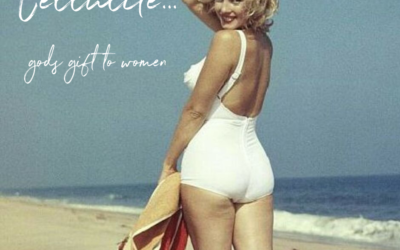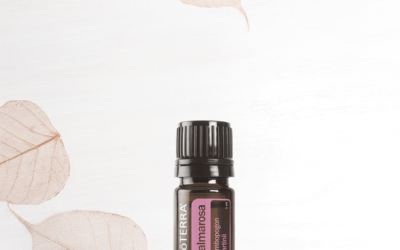Frankincense is free throughout December for new members and existing customers with any 200 point order placed. I know. It’s amazing and I absolutely hang for December to stock up on Mr Frank.
But this isn’t a post about why you need it.
This is a post about why knowing WHERE your Frankincense has come from and HOW it was sourced is absolutely critical and a responsibility for all of us essential oil consumers.
Frankincense trees are sacred. They are referenced often in ancient texts and held in high regard by the native landowners as an essential part of their indigenous story.
The harvesting of Frankincense is a very labor-intensive process taking four months to complete from the time the tree is tapped to the resin being dry and ready for distillation.
There is NO shortcut with this process. The health and well being of the Frankincense trees depend on there being no shortcuts taken.
Firstly, a Frankincense tree cannot be harvested until it reaches 15-20 years of age. Frankincense is harvested by making a cut in the trunk of the tree. Resin seeps out of the wound and hardens on the surface. Harvesters must wait 15-30 days to harvest the resin and it’s imperative that the resin is left on the wound till completely dry in order to protect the tree from insects entering.
If a Frankincense tree is cut too many times without adequate rest periods between harvested, that tree dies. It has simply been bled dry of it’s life force. For this reason, trees need to be rested for a whole year after every two consecutive harvesting seasons.
Harvesting outside the resin season is dangerous to the tree and places them under great stress from which they may not recover.
In the native landscapes of Somaliland, Oman and Ethiopia where these trees are found, over harvesting has been rife thanks to the work of Frankincense Poachers, yes Poachers, such is the value of Frankincense to these poor communities with limited economic means.
As such these trees are in great danger of being over harvested to the point of no return.
Because Frankincense grows in sparsely populated, wild areas with sometimes kilometers between each tree, keeping an eye on Poacher activity is incredibly difficult. Drones are now being employed to constantly scan the landscape for unwarranted activity to protect the trees and also the livelihood of the people who actually own the land and care for the trees.
Take a moment to have a watch of this video with Dr Ananjette DeCarlo who heads up the Aromatic Plant Research Center’s Project Save Frankincense as she clearly shows us the difference between good and bad harvesting practices. doTerra work closely with these two organisations.
Here is what you need to know about how doTerra sources their Frankincense……..
– doTerra’s Frankincense is a blend of four species (B. carteri, B. frereana, B. sacra and B. serrata) to ensure pressure is never placed on one species alone which further supports sustainability practices whilst also creating a beautifully synergistic therapeutic experience for the end consumer.
– The APRC (Aromatic Plant Research Center) works closely with doTerra to ensure that these precious resources are carefully managed.
– doTerra works with a dedicated Frankincense Preservation Team (Project Save Frankincense) headed by Dr. Anjanette DeCarlo to ensure best practices are followed with regards to sustainability and forest protection. Their role is to carefully assess at-risk trees, prevent overtapping and ensure harvesting seasons never exceed eight months.
– doTerra’s Tim Valentiner Vice President of Global Strategic Sourcing was invited to speak at the World Congress on Medicinal and Aromatic Plants (WOCMAP VI) and share their learnings and recommendations for implementing sustainable, environmental stewardship practices for safeguarding Frankincense.
– doTerra has invested heavily in research, supporting and developing nurseries and propagation projects to ensure sustainable harvesting practices and are acknowledged as being one of the few private sector companies that actually give a shit about environmental stewardship.
– doTerra are members of a frankincense alliance that works directly with the Convention on International Trade in Endangered Species of Wild Fauna and Flora (CITES) to protect Boswellia species around the globe.
– The doTERRA Co-Impact Sourcing Initiative is the only initiative that provides frankincense harvesters with fair wages by bypassing brokers and working directly with the communities who grow, harvest and sort the frankincense. The manner in which doTerra sources means that local communities and landowners choose to ONLY deal with doTerra, giving complete exclusivity over their Frankincense.
– In return for these exclusive partnerships, doTerra pays up to 5 times the industry standard for these harvests and provides food and other needed commodities as pre-payment throughout the year in order to help harvesters feed their families. This year-round access to food and cash significantly decreases the over-harvesting of trees in non-harvest months by decreasing the desperation of the people.
– They also provide critical services and infrastructure to these communities. To date, two boarding schools and one community health care center (the only in the region for hundreds of kilometers) have been funded and built through doTerra’s Healing Hands program.
When we see other brands of Frankincense offered up on the market, we MUST ask the question of how and where they have been sourced.

Image by Alice Nichols
doTerra asks this question for us with every single plant species…….
If it’s not traceable and sustainable, it’s not sold.
When it comes to plants such as Frankincense, I want to encourage you not to settle for cheap. Ever. If you do not know where that Frankincense has come from, how it was harvested or where it was sourced, please don’t buy it.
If you see Frankincense retailing at your local health food store for under $50 a bottle, it either isn’t Frankincense OR it’s Frankincense that has been sourced unethically and unsustainably.
Vote with your dollar and vote for environmental stewardship so that local communities can safeguard their sacred trees for generations to come and that we can enjoy the powerful benefits of using Frankincense for years to come.





0 Comments